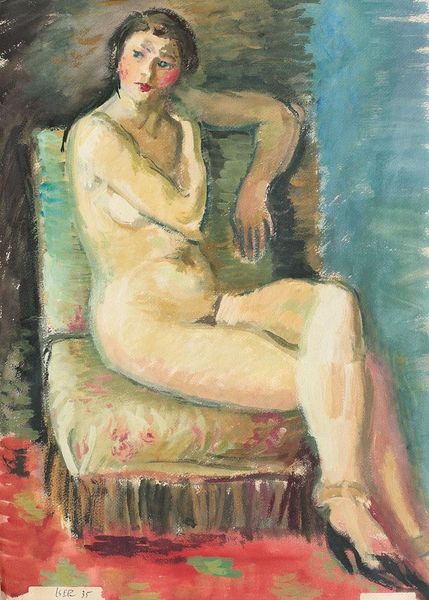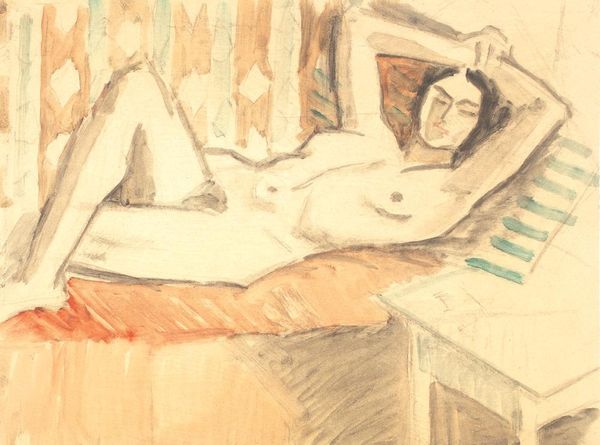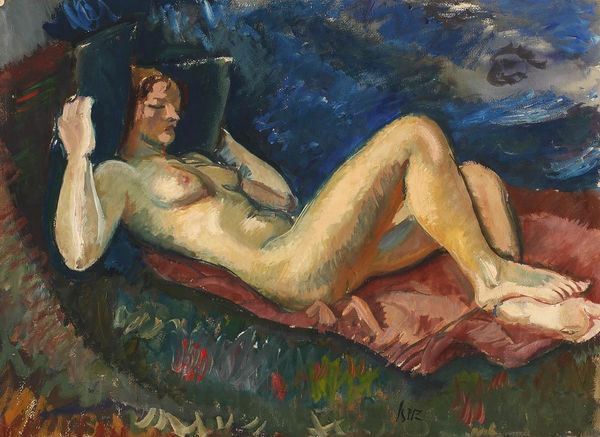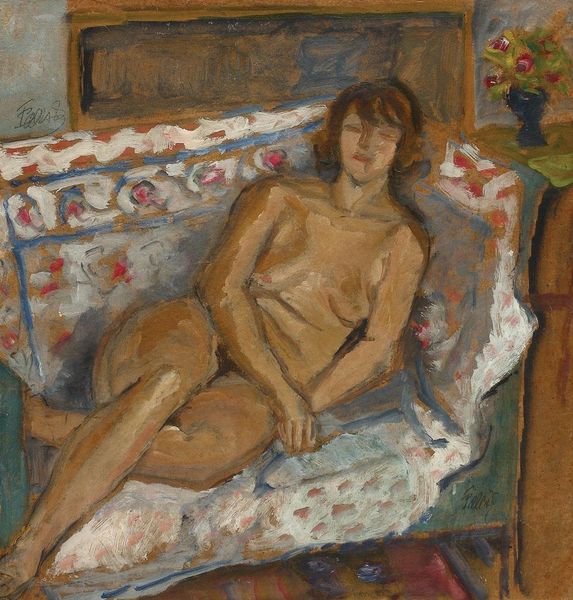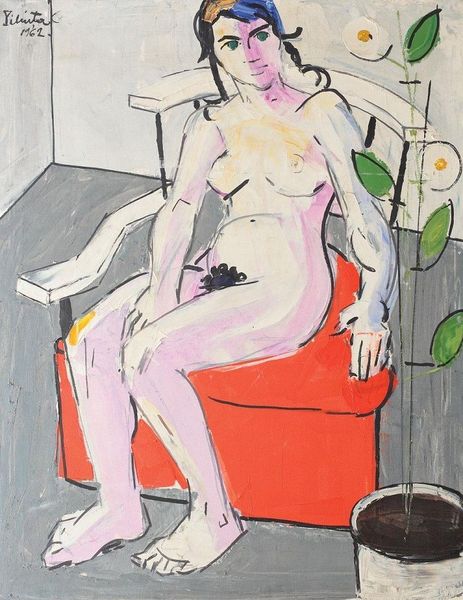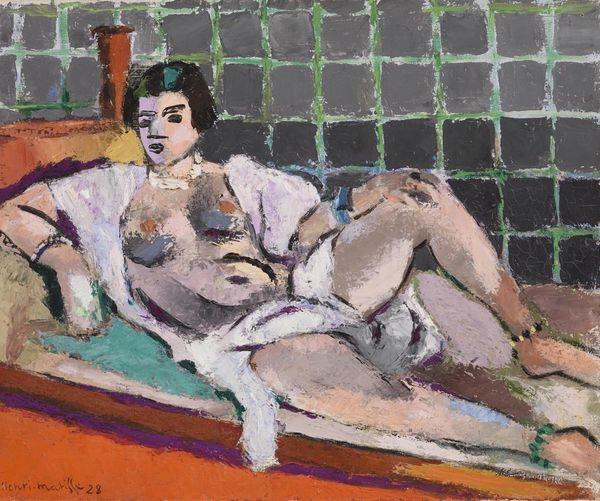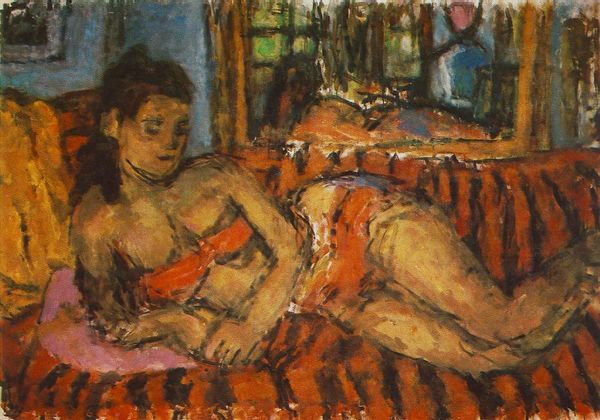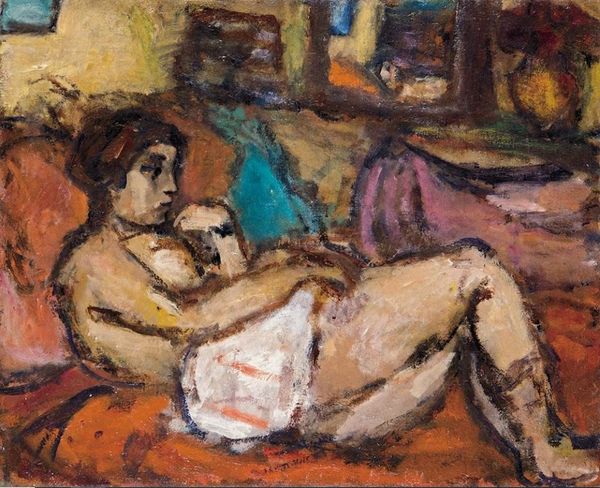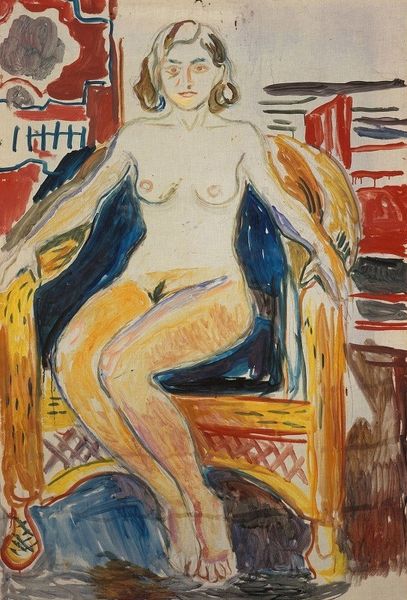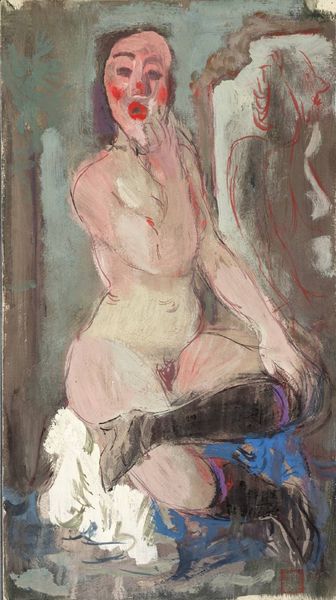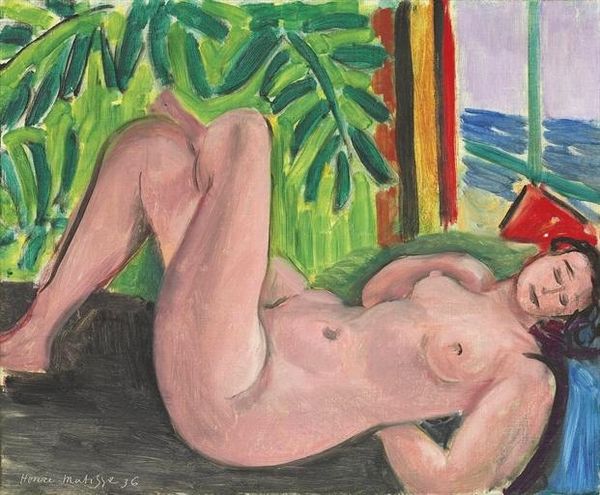
Copyright: Theodor Pallady,Fair Use
Editor: This is Theodor Pallady's "The Little Cigarette (Nude)," painted in 1931 with oil paints. I'm immediately struck by the intimacy of the scene. The casual pose, the cigarette... it feels like we're intruding on a private moment. How do you read the work? Curator: Intrusion is key. Consider Pallady's process, layering oil paint to construct this scene. He’s manufacturing intimacy. The visible brushstrokes remind us that this is, above all, a made object. The materiality pushes against any purely voyeuristic reading, doesn't it? It’s not simply a depiction of a woman, but a study in textures and how they define space and social relation. Editor: I see what you mean about the textures! It’s not just about representing flesh; it's about how the application of paint itself contributes to the overall feeling of closeness, but also, as you said, artificiality. Does the book, or the cigarette, act as material clues? Curator: Absolutely. These details point to consumption, leisure, and a specific socio-economic context. The "cigarette" in the title isn't merely descriptive, it’s an invocation of consumer culture and its entanglement with representation of the female form. Note also how the composition is framed with patterns: the floral rug, the striped sofa; these add visual layers, complicating any singular interpretation of the female figure. They speak of manufactured and commodified domesticity. Editor: So, instead of just a portrait, it is a painting that subtly hints at the cultural and economic factors at play. Curator: Precisely! The raw materiality, brushstrokes, the arrangement, they all bring forth layers of meaning, forcing us to question what’s truly on display beyond the initial "nude". Editor: I see it so differently now. Thanks! Curator: My pleasure, this helps highlight the subtle clues.
Comments
No comments
Be the first to comment and join the conversation on the ultimate creative platform.
